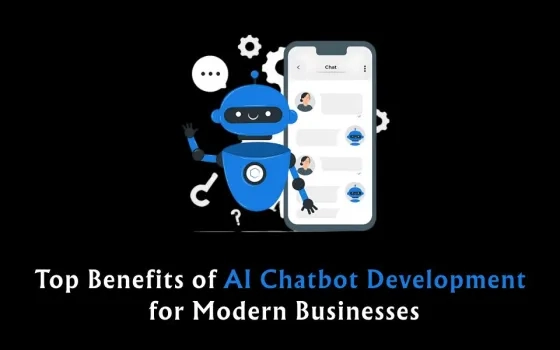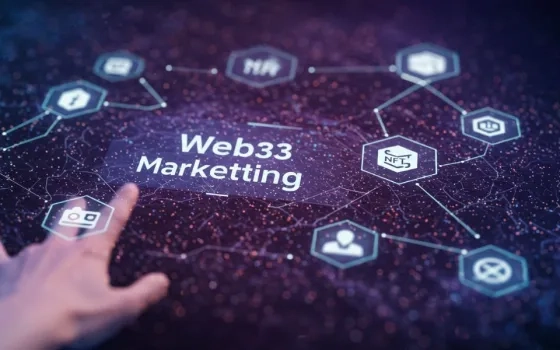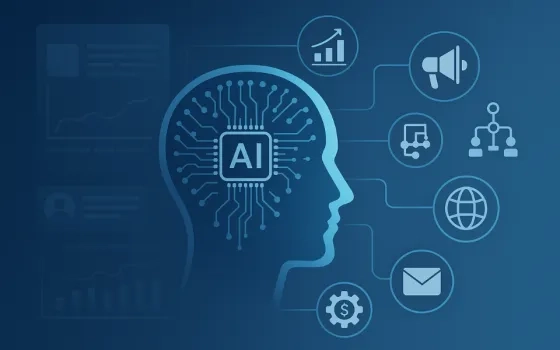Today, contact centers are the backbone of the customer service industry. They have evolved in the last six decades as technology advanced. They started with the simple PBX systems in 60’s. The ACD (Automatic Call Distribution) feature was introduced in early 70’s. It was followed by the invention and the expansion of IVR (Interactive Voice Responses) technology in mid ’70s. The term “Call Center” was popularly used across the globe during the ’80s, which started providing “24X7” customer support as their main USP. By mid-90’s, the VoIP PBX was introduced. It became the highlight in the customer service business. In the late ’90s, internet web services started blooming, transforming the customer support industry into a new horizon of multichannel support such as audio/video calling, messaging, email, fax, etc., through one platform.
Though the live agents could deliver services using the latest communication technologies, on deeper analysis it was found that multiple calls were made for the basic and routine activities that could be easily automated. It was a tiring job to attend a huge number of end-users with smartness and efficiency, maintaining higher levels of customer satisfaction. Adding more workforce means directly increasing the operational costs. Hence, the idea of automating some of the agent functions began to conceptualize. The AI started spreading its wings in contact center space for three main reasons:
- Improving customer satisfaction
- Improving agent efficiency
- Cost-saving
Improving Customer Satisfaction
Customer satisfaction is of utmost importance when it comes to the service industry. The world is running at a faster pace. Consumers are well versed with smartphones, social media, and consumer-friendly apps, which have raised expectations. No user would tolerate long waiting times, inefficient agents, inaccurate data, or impaired communication. One bad experience and you can lose the customer forever.
Thus, with the help of Artificial Intelligence, contact centers have started targeting this very primary objective of customer satisfaction. Some of the scenarios where AI can add value are mentioned below:
The incoming call can be quickly analyzed to determine what kind of products or services the caller buys, their sales history, and their previous experience of interacting with agents. Based on the analysis, the calls can be routed to the right agent to deal with the customer successfully. Customers are bound to get happy if they feel that their agent knows them well.
The real-time speech analysis on live calls can help identify customers’ moods through their tone, pitch, and words. If a customer sounds frustrated or unhappy, a supervisor or higher-skilled person can jump into the call immediately to avoid a negative impression and make the customer happy.
The post-call analytics can identify how many times the customer was upset or used phrases like “I don’t want your service” or “I am cancelling the order.” If dissatisfaction is often observed from potential customers, service providers can decide whether to offer any discounts or rebates to keep them pleased.
Social media has become an essential part of our day-to-day life. On average, an adult spends around 5 hours on mobile and 50% of it on social media. Thus, it is easy for brands to find and reach out to customers on social channels such as WhatsApp, Facebook, Twitter, and Instagram. AI-powered ChatBots play a crucial role in CRM operations. They can extract information about likes, buying habits of users and provide context-rich offerings smartly and quickly as desired by the customers leading to their satisfaction.
Improving Agent Efficiency
Often, customers’ inquiries are trivial and don’t need the agent’s technical or communication expertise to a great extent. By automating the monotonous and mundane tasks through ChatBots, the entire ecosystem can be made more productive and efficient. ChatBots can address simple queries at their level enabling live agents to tackle the real complex issues
ChatBots can also allow potential consumers to schedule a call-back with a live agent if needed in specific cases, saving crucial time.
Upon receiving the call, AI can quickly carry out ID validation through voice biometrics which otherwise may take a longer time. Thus, the customer is ready straight away to discuss the problem with the agent without wasting time on the validation process.
During the call, AI can present accurate customer data to agents in a fraction of seconds, making it easier to communicate with the customers. Also, agent actions can be automated through artificial intelligence, such as opening an email or sending a file when the agent talks about it to the customer during the conversation. It can improve the overall work efficiency of agents.
More intelligent routing can optimize the utilization of agents. This not only reduces fatigue but also adds efficiency.
Cost Saving
As the customer service industry grew, the demand for continuous support started increasing proportionately. The call load on contacts centers began increasing, and it became challenging for them to attend a massive number of calls in peak hours with the available workforce. Increasing staff and managing them efficiently led to an increase in overall operational costs. Hence, the idea of automating some of the agent functions began to develop. The automated contact center chat agent or ‘ChatBot’ saved the operational costs as contact centers could operate with fewer agents handling complex customer issues. In contrast, ChatBots tackle all other customer queries independently. ChatBots also add value to customer retention by providing extended support on holidays and weekends and eliminating the queue waiting time.
The initial ChatBots were Rule-based and were mainly used for FAQ content. Being non-autonomous, they required ongoing manual training by experts and engineers. They used to take around 9-12 months to build and deploy. Hence, they were not very cost-efficient. Also, they were not smart enough to handle out-of-the-box questions asked by users.
The AI-based ChatBots came into existence to provide intelligent, sophisticated, and more personalized customer conversation. They undergo continuous self-training using machine learning and can remember the context from old conversations to improve service offerings in ongoing interactions. Through intent extraction and machine learning, they could understand and process text inputs smartly and respond in a human-like manner.
AudioBots
Humans prefer expressing their thoughts in voice than in text as it is quicker and easier. This gave birth to AI-based virtual assistants like Siri, Alexa, and Google Assistant in the period of 2010-2016. These virtual assistants are intelligent, interactive, and specialized in offering services to users remotely, such as making phone calls, checking calendars and scheduling appointments, booking movie or air tickets, managing email accounts, etc. They use NLP (Natural Language Processing) to match user voice input to executable commands.
The success of virtual assistants attracted the contact center industry to move from text-based ChatBots to the AudioBots. Initially, they faced challenges due to the inability of a bot to accurately understand the user’s audio input and its own poor voice quality in response. However, they evolved with efficient speech recognition techniques and better voice quality over the period, giving users a feel of context-rich communication with real agents. AudioBots are more intelligent than the traditional DTMF-based system. The user no longer needs to listen to the menus and press corresponding digits on the keypad to get the required service. These AI-powered AudioBots allow users to navigate an IVR system with their voice.
Modern-day Conversational AI
The modern-day text & voice-based ChatBots equipped with AI capabilities are often referred as “Conversational AI Solutions.” Being empowered with features like NLP, intent extraction, machine learning, speech recognition, and sentiment analysis, these solutions understand and process text or voice inputs smartly and interact with customers in a human-like manner, even in complex user conversations
They can:
- Perform speech-to-text conversion, read the keywords in conversation, identify user sentiments and adapt responses accordingly.
- Remember important information, context, user preferences, etc. to offer better, context-rich personalized conversational service
- Reach out to the global audience through multi-lingual support and efficient translation services
- Provide ease of integration with various social media platforms such as Facebook, WhatsApp without losing the context.
- Analyze conversational data and improve customer experience in the next interaction with intelligent call routing and context-based communication
Though modern conversational AI solutions can go a long way, they cannot replace human agents entirely as they may not handle a specific problem or recover from a mistake. Also, today, humans are much better at demonstrating empathy and emotions, which makes customers feel relieved and satisfied.
In coming years, Conversational AI Solutions will get better and better at quickly and precisely understanding customer needs. They will be capable of understanding and processing the accent, speed, tone, and pitch of a user’s speech in any language, accurately predicting the real-time sentiment and responding in an appropriate tone suitable for that conversation. These bots will be programmed to have the emotional intelligence to a certain level to make dynamic changes in the responses as per user’s mood and flow of the conversation to make it feel more organic, leading to the ultimate goal of customer satisfaction. A perfect combination of Live agents and AI for a given business scenario can be the differentiator and make a contact center stand out in the customer service industry.
The blog was originally posted on GS Lab's Website.
Author: Kedar Karmarkar, Manager Engineering | Communication Technologies at GS Lab

































